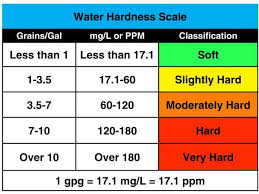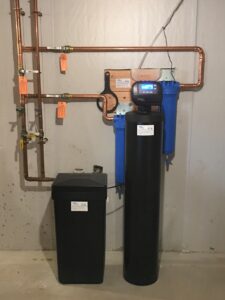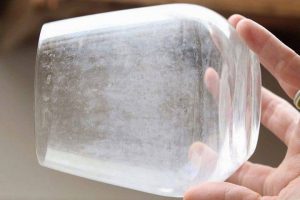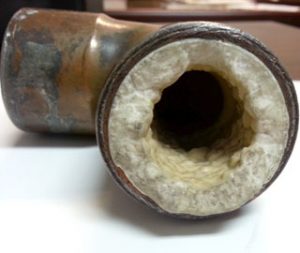A water softener can immediately solve the issue of hard water in your Cambridge home or business. Water hardness refers to the calcium and magnesium levels in the water. Cambridge Water Department (CWD) water is “slightly to moderately hard” and varies only slightly throughout the city. Hardness also varies slightly by seasons of the year. When using dishwashers, you may notice a slight increase in “spotting” on glassware, flatware or white residue in kitchenware, showers and other plumbing fixtures. As of the date of this writing, according to CWD, the hardness of the city’s tap water is typically around 50 to 70 parts per million. See the chart below for comparison.

THE AFFECTS OF HARD WATER IN YOUR HOME
Hard water (calcium & magnesium) interferes with many cleaning tasks, from doing the laundry to washing dishes to taking a shower. Washing your hair in hard water may leave it feeling sticky and dull and your skin dry or itchy. Dishes and glasses get spotted and a film may build up on shower doors, bathtubs, sinks and faucets. Clothes can look dingy and feel rough and scratchy. Magnesium and Calcium may have major affects on your plumbing distribution system and your ability to clean, even though the EPA has no published limits on these. Scale from hard water can build-up inside water heaters insulating the temperature sensor inside the tank creating extra work to bring the temperature up to the set level. This reduces the life of your hot water heater and will likely require early replacement. Hard water can also cause scale build-up in pipes that can lower water pressure throughout the home.

High Efficiency Water Softener
WHAT A WATER SOFTENER REMOVES
A water softener will effectively remove hardness minerals and dissolved forms of iron & manganese. In order to remove particulate matter, water filtration utilizing a properly sized sediment filter will be effective.

Hard Water Scale
If other impurities are confirmed in the water test, they can be removed with other types of water filtration systems. The maximum allowable level (per the Environmental Protection Agency) for iron as a secondary contaminant is .3 parts per million and for manganese is .05 parts per million. Small amounts of these minerals can have very noticeable, even damaging affects on your home’s water quality.

Damaging Scale
For more information about symptoms and potential causes in Cambridge water, see the link at Cambridge water operations.



